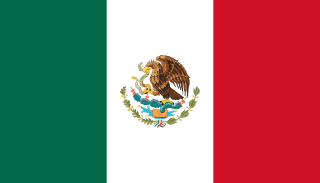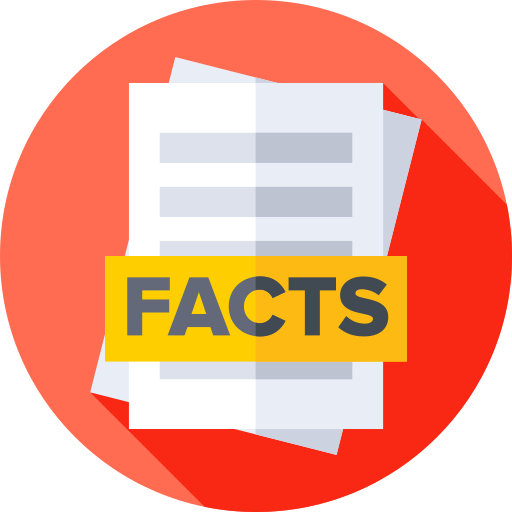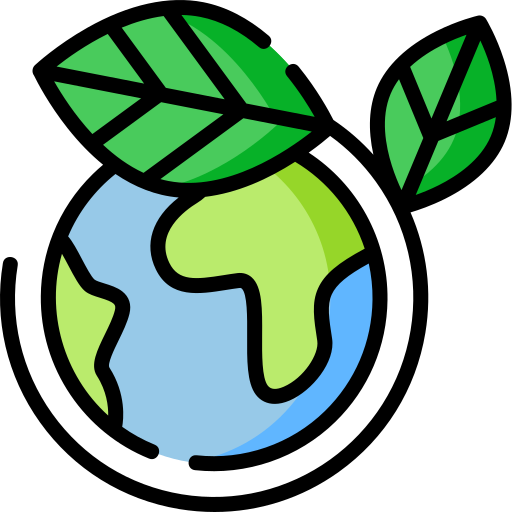Mexico - Geography

Here, let us take a look at the Geography of Mexico. note 1: strategic location on southern border of the US; Mexico is one of the countries along the Ring of Fire, which is a belt bordering the Pacific Ocean that contains about 75% of the world's volcanoes and up to 90% of the world's earthquakes
note 2: the Sac Actun cave system at 348 km (216 mi) is the longest underwater cave in the world and the second longest cave worldwide, after Mammoth Cave in the United States (see "Geography - note" under United States)
note 3: the prominent Yucatán Peninsula that divides the Gulf of America from the Caribbean Sea is shared by Mexico, Guatemala, and Belize; on the northern coast of Yucatan near the town of Chicxulub lie the remnants of a massive asteroid or comet crater about 150 km (93 mi) in diameter and extending into the Gulf of America; the impact is believed to have initiated a worldwide climate disruption that caused a mass extinction of 75% of the earth's plant and animal species, including the non-avian dinosaurs. Mother's mean age at first birth is 21.3 years (2008 est.) (), whereas, the Maternal mortality ratio is 42 deaths/100,000 live births (2023 est.)
Geographical data of Mexico
| Location | North America, bordering the Caribbean Sea and the Gulf of America, between Belize and the United States and bordering the North Pacific Ocean, between Guatemala and the United States |
|---|---|
| Geographic coordinates | 23 00 N, 102 00 W |
| Map references | North America |
| Tarrain | high, rugged mountains; low coastal plains; high plateaus; desert |
| Natural Resources | petroleum, silver, antimony, copper, gold, lead, zinc, natural gas, timber |
| Natural Hazards | tsunamis along the Pacific coast; volcanoes and destructive earthquakes in the center and south; hurricanes on the Pacific, Gulf of America, and Caribbean coasts volcanism: volcanic activity in the central-southern part of the country; the volcanoes in Baja California are mostly dormant; Colima (3,850 m) is Mexico's most active volcano and is responsible for periodic evacuations of nearby villagers; it has been deemed a Decade Volcano by the International Association of Volcanology and Chemistry of the Earth's Interior, worthy of study due to its explosive history and close proximity to human populations; Popocatepetl (5,426 m) poses a threat to Mexico City; other historically active volcanoes include Barcena, Ceboruco, El Chichon, Michoacan-Guanajuato, Pico de Orizaba, San Martin, Socorro, and Tacana; see note 2 under "Geography - note" |
| Irrigated Land | 59,910 sq km (2022) |
| Major rivers (by length in km) | Rio Grande river mouth (shared with US [s]) - 3,057 km; Colorado river mouth (shared with US [s]) - 2,333 km note: [s] after country name indicates river source; [m] after country name indicates river mouth |
| Major aquifers | Atlantic and Gulf Coastal Plains Aquifer |
| Land Boundaries | 4,389 km |
| Border Countries | Belize 276 km; Guatemala 958 km; US 3,155 km |
| Coastline | 9,330 km |
| Climate | varies from tropical to desert |
| Area | |
| Total Area | |
| Land Area | 1,943,945 sq km |
| Water Area | 20,430 sq km |
| comparative Area | slightly less than three times the size of Texas |
| Maritime Claims | |
| Territorial sea | 12 nm |
| Contiguous zone | 24 nm |
| Exclusive economic zone | 200 nm |
| Continental shelf | 200 nm or to the edge of the continental margin |
| Elevations | |
| Highest point | Volcan Pico de Orizaba 5,636 m |
| Lowest point | Laguna Salada -10 m |
| Mean elevation | 1,111 m |
| Land Use | |
| Agricultural land | 50.7% (2023 est.) |
| Agricultural land: arable land | arable land: 10.3% (2023 est.) |
| Agricultural land: permanent crops | permanent crops: 2.3% (2023 est.) |
| Agricultural land: permanent pasture | permanent pasture: 38.1% (2023 est.) |
| Forest | 34.2% (2023 est.) |
| Other | 15.1% (2023 est.) |
Population Distribution
Most of the population is found in the middle of the country between the states of Jalisco and Veracruz; approximately a quarter of the population lives in and around Mexico City
People and Society
In Mexico, the different Ethnic groups are such that we have: Mestizo (Indigenous-Spanish) 62%, predominantly Indigenous 21%, Indigenous 7%, other 10% (mostly European) (2012 est.)
| Population | |
|---|---|
| Pop growth rate | 0.72% (2024 est.) |
| Birth rate | 14.3 births/1,000 population (2024 est.) |
| Death rate | 6.5 deaths/1,000 population (2024 est.) |
| Health expenditure | |
| Physicians Density | |
| Hospital bed Density | 1 beds/1,000 population (2021 est.) |
| Total fertility rate | 1.79 children born/woman (2024 est.) |
| Gross reproduction rate | 0.88 (2024 est.) |
| Contraceptive prevalence rate | |
| Est married women (ages 15-49) | 56.6% (2023 est.) |
| Literacy | |
| Education expenditures | |
| Net Migration rate | -0.7 migrant(s)/1,000 population (2024 est.) |
| Nationality | Mexican | Mexican(s) |
| Languages | |
| Religions | Roman Catholic 78%, Protestant/evangelical Christian 11.2%, other 0.002%, unaffiliated (includes atheism) 10.6% (2020 est.) |
| Age Structure | |
| 0-14 years | 23.3% (male 15,647,805/female 14,754,004) |
| 15-64 years | 68.6% (male 43,651,105/female 45,983,174) |
| 65 years and over | 8.2% (2024 est.) (male 4,600,228/female 6,103,611) |
| Dependency Ratios | |
| Total dependency ratio | 45.9 (2024 est.) |
| Youth dependency ratio | 33.9 (2024 est.) |
| Elderly dependency ratio | 11.9 (2024 est.) |
| Potential support ratio | 8.4 (2024 est.) |
| Median Age | |
| Total | 30.8 years (2024 est.) |
| Male | 28.8 years |
| Female | 32.7 years |
| Urbanization | |
| Urban population | 81.6% of total population (2023) |
| Rate of urbanization | 1.4% annual rate of change (2020-25 est.) |
| Major urban areas (Pop) | 22.281 million MEXICO CITY (capital), 5.420 million Guadalajara, 5.117 million Monterrey, 3.345 million Puebla, 2.626 million Toluca de Lerdo, 2.260 million Tijuana (2023). |
| Sex Ratio | |
| At birth | 1.05 male(s)/female |
| 0-14 years | 1.06 male(s)/female |
| 15-64 years | 0.95 male(s)/female |
| 65 years and over | 0.75 male(s)/female |
| Total population | 0.96 male(s)/female (2024 est.) |
| Infant Motality | |
| Total | 12.1 deaths/1,000 live births (2024 est.) |
| Male | 13.4 deaths/1,000 live births |
| Female | 10.9 deaths/1,000 live births |
| Life Expectancy at birth | |
| Total population | 74.6 years (2024 est.) |
| Male | 71.6 years |
| Female | 77.7 years |
| Drinking Water Sources | |
| Improved: urban | urban: 100% of population (2022 est.) |
| Improved: rural | rural: 98.4% of population (2022 est.) |
| Improved: total | total: 99.7% of population (2022 est.) |
| Unimproved: urban | urban: 0% of population (2022 est.) |
| Unimproved: rural | rural: 1.6% of population (2022 est.) |
| Unimproved: total | total: 0.3% of population (2022 est.) |
| Sanitation facility acess | |
| Improved: urban | urban: 100% of population (2022 est.) |
| Improved: rural | rural: 98.2% of population (2022 est.) |
| Improved: total | total: 99.7% of population (2022 est.) |
| Unimproved: urban | urban: 0% of population (2022 est.) |
| Unimproved: rural | rural: 1.8% of population (2022 est.) |
| Unimproved: total | total: 0.3% of population (2022 est.) |
| Alcohol consumption per capita | |
| Total | 4.25 liters of pure alcohol (2019 est.) |
| Beer | 3.72 liters of pure alcohol (2019 est.) |
| Wine | 0.19 liters of pure alcohol (2019 est.) |
| Spirits | 0.19 liters of pure alcohol (2019 est.) |
| Other alcohols | 0.15 liters of pure alcohol (2019 est.) |
| Tobacco use | |
| Total | 13.8% (2025 est.) |
| Male | 21.8% (2025 est.) |
| Female | 6.3% (2025 est.) |
| Child marriage | |
| Women married by age 15 | 3.6% (2018) |
| Women married by age 18 | 20.7% (2018) |
Demographic profile
All Important Facts about Mexico
Want to know more about Mexico? Check all different factbooks for Mexico below.









